By Drs. Craig and Silvia Reid
T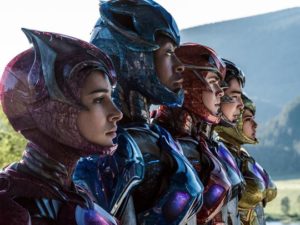 hey’re baaaack, and this time it’s personal. Nope, not Jaws nor Poltergeist…but the Power Rangers (PR) more precisely Mighty Morphin Power Rangers (MMPR), which is just one e away from being a psychotic experience on painkilling drugs. Based on what the new PR film looks like, it’s the Teletubbies on meth and steroids, as a group of young lads and lasses unite to take on Rita Repulsa and her boulder bozos and melt her gold digging ways before Angel Grove becomes Pagan Pass.
hey’re baaaack, and this time it’s personal. Nope, not Jaws nor Poltergeist…but the Power Rangers (PR) more precisely Mighty Morphin Power Rangers (MMPR), which is just one e away from being a psychotic experience on painkilling drugs. Based on what the new PR film looks like, it’s the Teletubbies on meth and steroids, as a group of young lads and lasses unite to take on Rita Repulsa and her boulder bozos and melt her gold digging ways before Angel Grove becomes Pagan Pass.
Why is this personal? For the first 90+ minutes of the film, it’s all about getting to know the deep seeded emotional angst, personal weaknesses and fears of today’s troubled, outcast teens as they navigate through their personal hells in search of friends, freedom and purposes in life, while dealing with school, bullies and parents who don’t understand them. We’ve all been there and done that. Yet by training in martial arts and by learning the creed of the Five Musketeers, “All for one and one for all,” their paths become clear…they’d rather die for each other than to give up as individuals.
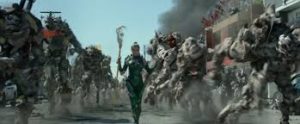 For those that came in late, when MMPR became part of the Fox Kids programming block in 1993, though various seasons of the franchise had scenes with English-speaking actors, MMPR got its source material, rubber-costumed monster villains, props and most martial arts footage from three Toei produced, Japanese TV superhero team programs.
For those that came in late, when MMPR became part of the Fox Kids programming block in 1993, though various seasons of the franchise had scenes with English-speaking actors, MMPR got its source material, rubber-costumed monster villains, props and most martial arts footage from three Toei produced, Japanese TV superhero team programs.
The American show starred five teenagers recruited by the alien Zordon to fight monsters sent by Lord Zed and Rita Repulsa to conquer Earth. Zordon transformed the teenagers into space-suited warriors called Power Rangers who could conjure up building-sized, metallic, alter-ego animal/dinosaurs known as zords. When the zords failed, the PR united to form a giant humanoid-looking robot called Megazord.
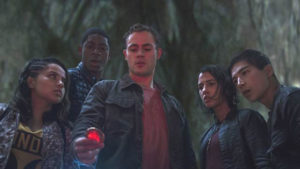 Now 23 years and 23 incarnations of the show later (20 different TV themed series, two theatrical films and one new movie) the plot
Now 23 years and 23 incarnations of the show later (20 different TV themed series, two theatrical films and one new movie) the plot
line hasn’t changed that much. The 65 million-year-old Zordon (a digitized peg-faced Bryan Cranston), along with his flying saucer head-shaped mischievous Ai yi yi speaking Alpa 5 robot, recruit five teens with attitudes to fight Rita (Elizabeth banks): Dacre Montgomery’s Jason (Red Ranger), ex-football star who threw it all away with stupid pranks; Naomi Scott’s Kimberly (Pink Ranger), a brooding sexting bully and ex-cheerleader; RJ Cyler’s Billy (Blue Ranger), a unconfident picked-on nerd; Ludi Lin’s Zack (Black Ranger), a rebel without a cause taking care of his dying mum at home; and Becky G.’s Trini (Yellow Ranger), a loner who’s the first openly gay cinematic superhero.
There’s so many films that seems to have influenced the new PR movie apart from their 23 year history: John Hughes’ Breakfast Club (1985), where five high school misfits discover commonalities in Saturday detention; Sam Raimi’s Spider-Man (2002), as we see the bumbling Peter Parker humorously learning to cope with newly found super powers; and the highly digitized giant robots of Michael Bay’s The Transformers (2007) and Guillermo del Toro’s Pacific Rim (2013).
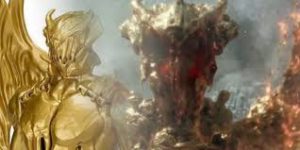 Of course one could argue that that since Pacific Rim is influenced by Japanese tokusatsu live-action film or TV, which combined daikaiju (giant monsters) like Godzilla that uses suitmation, actors in rubber monster costumes destroying miniature cities, and the Super Sentai (fighting squadron) Series, source material for Power Rangers, that Power Rangers precedes Pacific Rim.
Of course one could argue that that since Pacific Rim is influenced by Japanese tokusatsu live-action film or TV, which combined daikaiju (giant monsters) like Godzilla that uses suitmation, actors in rubber monster costumes destroying miniature cities, and the Super Sentai (fighting squadron) Series, source material for Power Rangers, that Power Rangers precedes Pacific Rim.
A turning point in the Super Sentai action stemmed from the Shaw Brothers 1975 film The Super Inframan, which was influenced by Kamen Rider and Ultraman. However, the Hong Kong fights upped the ante over the Japanese combative action, compliments of Bruceploitation star Bruce Le and veteran Hong Kong fight choreographer Tang Jia.
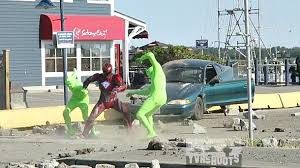 So by the time Power Rangers hit stateside, the crux of the TV show was the Japanese shot fights scenes that were influenced by Hong Kong’s high flying Fant-Asia action (1983-1993) and Jackie Chan’s new style of fight choreography seen in Police Story (1985) combined with fast paced samurai swordplay and body fidgeting gesture. Yet in the new film, 23 years later, this is no longer the case.
So by the time Power Rangers hit stateside, the crux of the TV show was the Japanese shot fights scenes that were influenced by Hong Kong’s high flying Fant-Asia action (1983-1993) and Jackie Chan’s new style of fight choreography seen in Police Story (1985) combined with fast paced samurai swordplay and body fidgeting gesture. Yet in the new film, 23 years later, this is no longer the case.
Where the training sequences tried to convince the audience that these kids maybe had some pre-film training or previous martial arts experience, based on what is on film, neither was the case. The scenes looked more like when we were kids and we’d do fake sword fights using twigs where the intention was never about trying to hit each other but merely to tap the twigs to create a x pattern in the air.
 Similar to the TV show, the beauty of the stars being clad in suits of flexible armor is that we all know it’s not the actors but stunt doubles doing the fights, and that’s okay, it makes sense. I used to stunt double Chinese women in period piece kung fu soap operas in Taiwan back in 1980-82.
Similar to the TV show, the beauty of the stars being clad in suits of flexible armor is that we all know it’s not the actors but stunt doubles doing the fights, and that’s okay, it makes sense. I used to stunt double Chinese women in period piece kung fu soap operas in Taiwan back in 1980-82.
However, even the stunt double fights were weak and disjointed where there was no pace, logic or rhythm to the action…they didn’t tell an action story. Now and then one of the Rangers would flash a capoeira-like skill or a fancy spinning kick but they were out of context of the action. It’s as if the director said, “Just have them throw a cool spinning kick or awesome looking flipping gymnastic strike and we’ll stick into the final edit hitting some CGI villain.”
Furthermore, one couldn’t see the action or what anyone was doing because they used close ups, earthquake cam, the fighters would perform one to three skills per shot then snap edited the sequence similar to how dance choreography on music videos look.
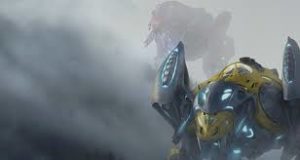 Closing on a positive point. When the PR finally break out the Dinozords, they’re rushing to battle and we hear in the back ground, “Go go Power Rangers, go go Power Rangers, Mighty Morphine Power Rangers,” it was a pleasing chill up the spine and the audience of 250+ cheered.
Closing on a positive point. When the PR finally break out the Dinozords, they’re rushing to battle and we hear in the back ground, “Go go Power Rangers, go go Power Rangers, Mighty Morphine Power Rangers,” it was a pleasing chill up the spine and the audience of 250+ cheered.